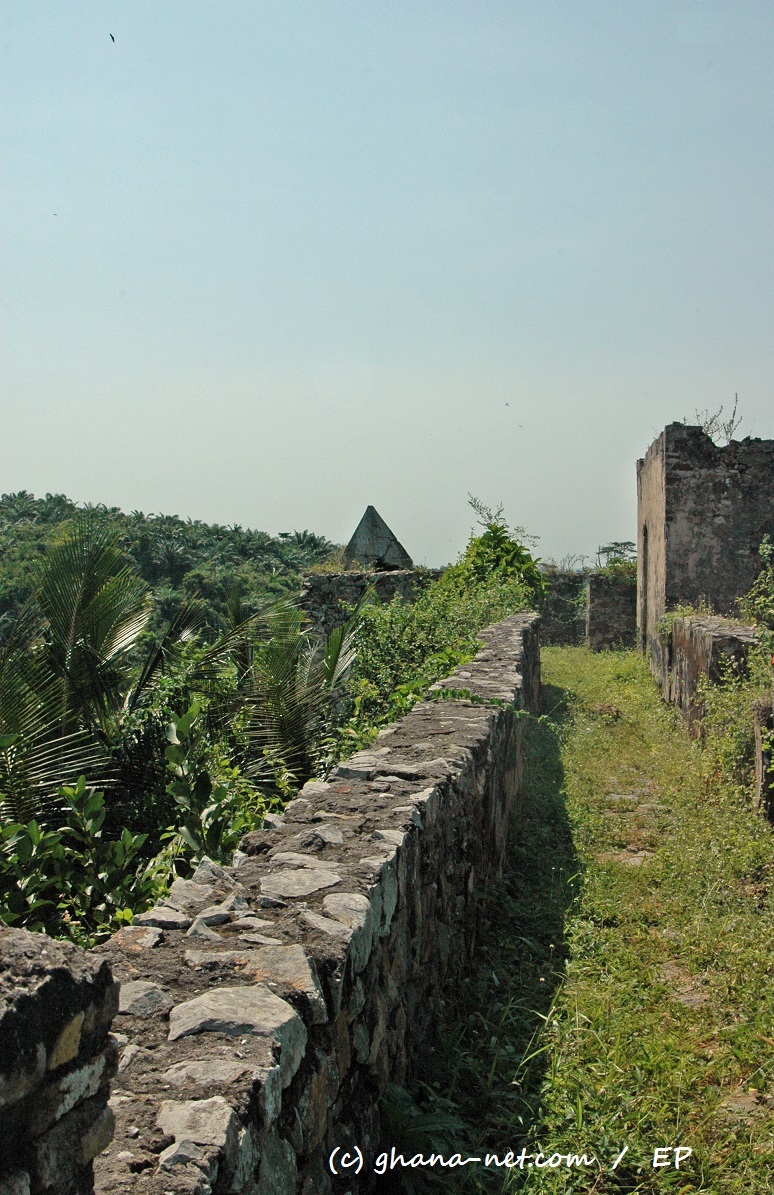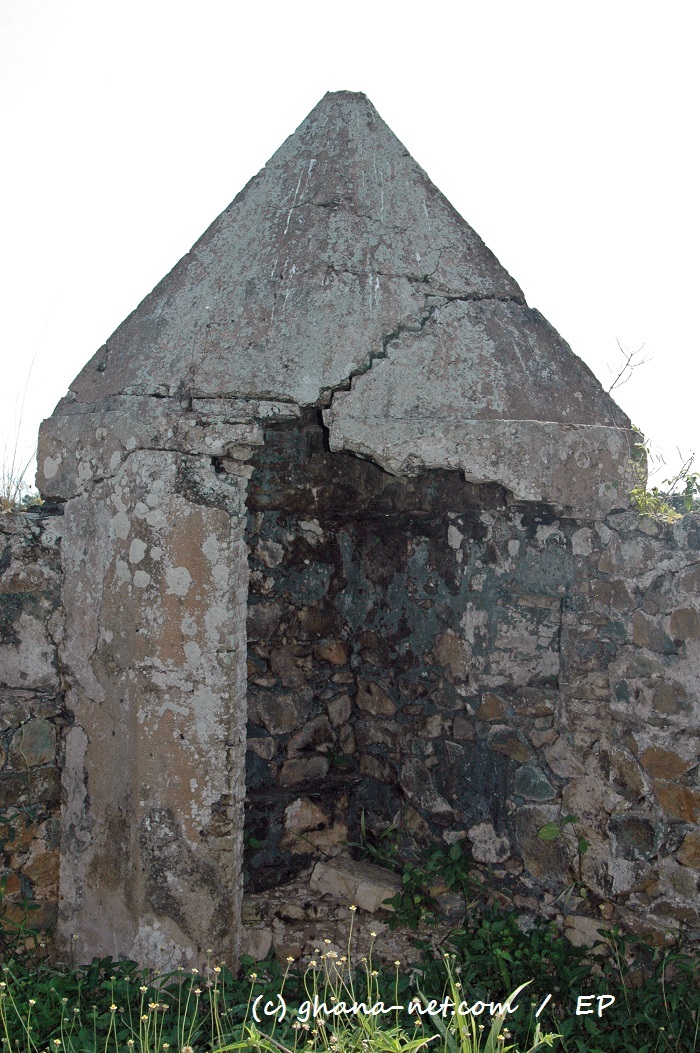
King Badu Bonsu II of the Ahanta led a fierce resistance against Dutch colonial rule in 19th-century Ghana, resulting in his execution and the confiscation of his head as a trophy. His remains remained in....
Located in the village of Butre, it stands on a steep, forested hill with commanding views of the sea and surrounding terrain — a strategic location ideal for monitoring naval activity and protecting Dutch interests in the region.
Though modest in size compared to Elmina or Cape Coast Castle, Fort Batenstein is notable for its unique hilltop location, compact military layout, and adaptive architecture suited to its terrain.
Overall Design:
The fort follows a quadrilateral layout with four bastions at its corners — a typical design for European coastal forts in the 17th century. It is compact, functional, and built for defense and observation rather than grandeur.
Bastions:
Four small bastions, built for mounting light cannons. Their size and design were intended to repel smaller threats and control the surrounding area, but they lacked the scale of larger forts like Elmina.
Rooms & Levels:
The fort was a two-storey structure with around ten rooms, including:
Living quarters
Dining room
Kitchen and baking room
Storage rooms
Courtyard
A well, crucial for water supply during sieges or long occupancy
Materials:
Constructed primarily from local stone and mortar, using European building techniques
Walls were thick but not heavily reinforced
The internal floors may have used wood, now mostly gone due to decay
Courtyard:
A small, rectangular courtyard was at the heart of the fort, typical of European-style fortifications of the era. It provided light, ventilation, and served as a social space.

Fort Batestein, defense walls upper floor, Butre
Elevated Position:
Its location on a steep, forested hill made it naturally defensible. Climbing to the fort even today requires effort, which would have made direct attacks difficult.
Cannon Mounts:
Historical records state the fort had 11 light cannons mounted, primarily for signaling and limited defense. The structure reportedly shook when cannons were fired, a sign of poor structural design or weak foundations.
Walls and Weaknesses:
The walls are built for light defense, not full-scale military resistance
Early accounts criticized the design as "ill-conceived" and vulnerable
William Bosman (Dutch trader) notably described the fort as shaking when guns were fired

Part of the Dutch Fort Batenstein defense wall, Butre
A sawmill was added in the later years to support shipbuilding and fort maintenance, capitalizing on nearby forests for timber.
In 1872, the fort was handed over to the British, who made some minor modifications. However, they found it largely redundant due to its remote location and small size.